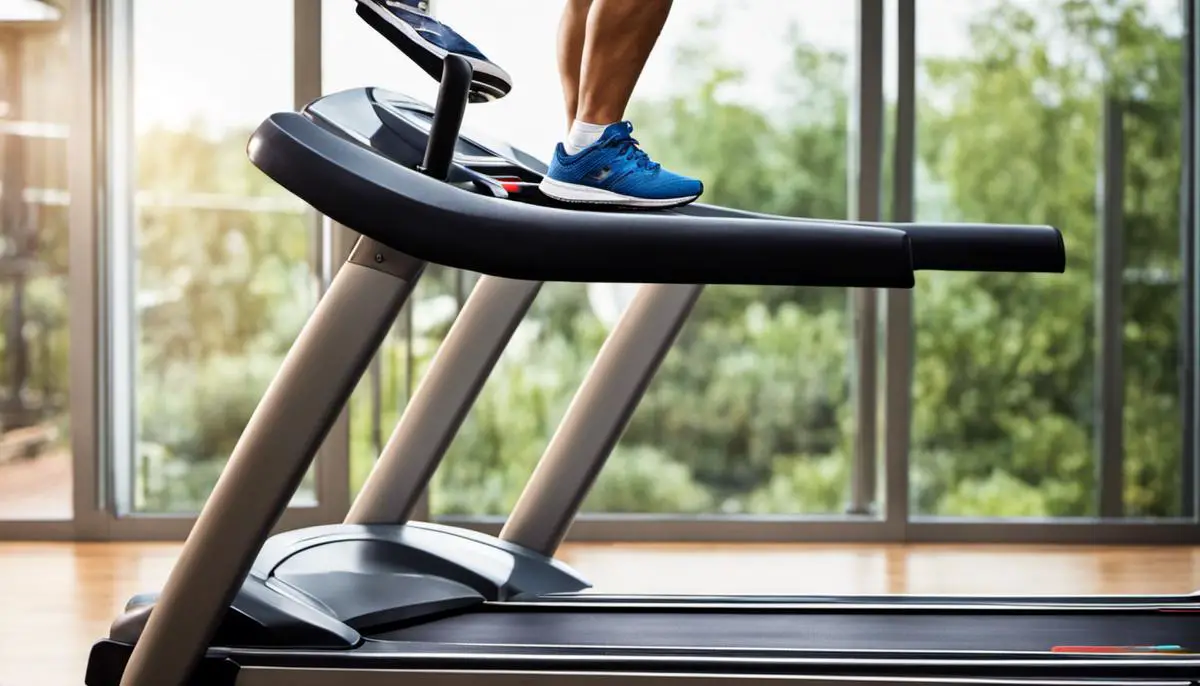When it comes to fitness and weight loss, knowledge is power. Understanding how energy is consumed in the body during physical workouts is the first step towards optimizing your fitness regimen. Equally crucial is comprehending the impact of different exercises on calorie burn. Among various exercises, sit-ups are often underrated despite their impressive track record of benefiting physical fitness. This essay elucidates the basic dynamics of energy consumption and how our body burns calories during exercise, with a special focus on the mechanisms of sit-ups and how they contribute to overall physical wellness. We will also delve into the intricacies of different sit-up techniques and their related calorie burns, while guiding you on how to reap maximum benefits from your sit-up routine.
Understanding Calorie Burn and Exercise
The Symbiotic Interplay: A Scientific Look at the Correlation between Calories and Exercise
The intricate relationship between caloric intake and physical activity is a multifaceted one, characterized by both complexity and balance. Decades of rigorous scientific research confirm the profound effect of these two variables on overall human health. Understanding this correlation enables us to effectively gauge our nutrient needs and strategically plan our physical activity to maintain, lose, or gain weight.
Firstly, to unravel our subject of interest, it is imperative to comprehend a baseline concept: a calorie, at its core, is a unit of energy. When we ingest food, we consume calories, or more aptly, ‘potential energy’ that is later converted by the body into functional kinetic energy. Each individual has a baseline caloric need, termed the Basal Metabolic Rate (BMR), which covers the fundamental functions such as cellular repair, breathing, and maintaining body temperature. The total daily caloric need accounts for BMR plus the extra energy expended through physical activity and the metabolic response to food intake.
Exercise, then, acts as the consumer of these stored calories. It facilitates the conversion of potential energy into kinetic, enabling the body to perform movement. The type, duration, and intensity of the exercise play a crucial role in shaping how many calories are expended. Aerobic activities like cycling or running tend to burn more calories than strength training in the immediate term, but the latter improves muscle tone, in turn, enhancing calorie-burning potential in the long run.
There exists an intricate balance between calories consumed and spent. If caloric intake exceeds expenditure, weight gain results. Conversely, if calories utilized through exercise surpass those consumed, weight loss occurs; this reflects the underlying principle of most traditional diet strategies.
But here’s an important caveat: not all calories are ecologically equal. Dietary composition matters profoundly. For instance, ingestion of 100 calories derived from sugary candies varies greatly in bodily impact from 100 calories of lean protein. The former contributes to abrupt spikes in blood sugar levels, inciting harmful inflammatory responses, while the latter offers a more extended-release, facilitating longer satiety and muscle repair post-exercise.
Moreover, research is increasingly reminding us to shift focus not just from the quantity, but certainly to the quality of calories consumed and the type of physical activity engaged in, reminding us that our bodies are not mere calorie calculators but complex, responsive biological systems.
The correlation between calories and exercise lies at the cornerstone of human physiology, intricately influencing our health, physical appearance, and wellness. This complex dialogue requires further extensive research, which promises comprehensive insights that could potentially revolutionize our current understanding of energy balance, dietary needs, and effective exercise strategies. The scientific journey into exploring this complex correlation, thus, continues avidly, guided by an insatiable pursuit of knowledge.

The Science Behind Sit-ups
Sit-ups engage a diverse array of muscular networks, primarily targeting the rectus abdominis, transverse abdominis, external and internal obliques, hip flexors, and in certain variations, the lower back muscles as well.
The rectus abdominis– or the ‘six-pack muscle’– is worked during the curling phase, as you lift your torso.
The obliques assist in controlling the twisting motion in sit-ups with a twist.
Transverse abdominis, also known as the ‘corset muscle’, aids in maintaining stability and posture during the movement.
The roles these muscles play in performing a sit-up embody the importance of compound exercises in engaging multiple muscle groups simultaneously.
The relationship between these muscle activities and caloric burn is based upon the principle that the energy required to contract muscles is derived from calories.
Herein lies the importance of sit-ups – as multiple muscles are involved, the caloric expenditure is potentially greater than exercises targeting a singular muscle group.
To put it succinctly, your muscles operate much like engines, and calories essentially represent fuel for these engines.
Considering energy usage, it is vital to note that different muscle fibers have different energy requirements.
Fast-twitch fibers, which are primarily engaged in strength-based activities like sit-ups, are anaerobic and consume more energy per contraction than slow-twitch fibers.
This ability to utilize greater caloric resources results in a higher net caloric burn while utilizing these specific muscles.
The rate of caloric burn affects the overall energy equation along with BMR and caloric intake, as already discussed.
However, the key lies not merely in quantitative calorie burning but also the qualitative afterburn, or the Excess Post-Exercise Oxygen Consumption (EPOC) effect.
Activities like sit-ups, which engage high-energy-demanding fast-twitch fibers, are more likely to raise EPOC levels, resulting in an elevated metabolism and subsequent calorie usage for hours post-workout.
In conclusion, the importance of compound exercises like sit-ups transcends beyond superficial physical traits and delves into deeper metabolic benefits.
Their multi-muscle engagement and intensive caloric utilization aid in weight management, metabolic regulation, and overall wellness.
Such is the elegance of science that every ‘burn’ felt during a sit-up is a tangible echo of intricate biological systems at work, converting dietary intake into a fitter, stronger version of oneself.
The understanding of these phenomena inspires us to continually investigate the intricacies of the human body’s interaction with exercise, nutrition, and calorie expenditure.

Optimizing Your Sit-Up Routine
Enhancing Your Sit-Up Routine for Maximum Caloric Expenditure
With an understanding of calories, basal metabolic rate, and the complex interplay of diet and exercise, we can proceed to consider how one can reap maximum benefit from a sit-up routine. This involves a comprehensive exploration of improving form, increasing intensity, incorporating variations, and integrating other exercises to reap holistic benefits.
It is elemental to note that the essence of a sit-up lies in optimal form. A correct sit-up involves engaging the abdominal muscles and necessitates vertebra by vertebra curling upwards, followed by the controlled deceleration to lay flat again. This maneuver consumes considerable energy, thereby resulting in a surge in caloric burn.
Increasing the intensity of sit-ups can significantly stimulate additional caloric expenditure. The utilization of weights, for instance, can increase resistance, prompting the recruitment of more muscle fibers. It is crucial to gradually escalate the weight used to prevent muscle strain.
Incorporating sit-up variations is another approach that can notably amplify caloric burn. Each sit-up variation targets a distinctive portion of the abdominal muscles, creating a comprehensive workout. Moreover, these variations generate muscle confusion which thwarts fitness plateaus, thereby perpetuating the calorie-burning process.
Furthermore, peppering the sit-up routine with other exercises can effectively contribute to higher caloric burn. Compound exercises such as burpees or mountain climbers that challenge multiple muscle groups, coupled with the sit-up regimen, can initiate a total body workout. Such a compound workout demands a higher rate of energy expenditure compared to isolated exercises, hence fostering an extensive burn.
The energy requirements of the various muscle fibers, namely fast-twitch and slow-twitch, are inherently different. The adoption of a well-rounded routine engaging all muscle fiber types can pave the way for an enhanced calorific burn.
Understanding the pivotal role of the ‘afterburn’ effect or Excess Post-Exercise Oxygen Consumption (EPOC) can also assist in maximizing caloric expenditure. High-intensity exercises such as High-Intensity Interval Training (HIIT) sit-ups trigger the EPOC effect, leading to an elevated metabolic rate, and consequently, increased caloric burn even post workout.
It is clear that fortifying a sit-up routine requires meticulous attention to perfect form, escalated intensity, the integration of sit-up variations, addition of other compound exercises, exhaustive muscle engagement, and the exploitation of the afterburn effect. These enhancements could lead to a remarkable increase in caloric burn, heralding holistic wellness.
However, it is crucial to reflect upon the fact that a sufficient and nutritious diet is requisite to sustain a high-intensity workout routine. The type, quality and timing of dietary intake profoundly sway the caloric burn and the muscle recovery process.
Unlocking the multifarious, biological mysteries behind the transformation of dietary fuel into a healthier, fitter body, forms the cornerstone of our relentless research in the realm of exercise science. As we continue to chart this enigmatic territory, a nuanced understanding of the profound mechanisms will undoubtedly materialize, propelling us forward in our journey towards supreme health and wellness.

Remember, just as Rome wasn’t built in a day, fitness cannot be achieved overnight. Patience, resilience, and a deeper understanding of the body’s energy expenditure process are foundational pillars in the voyage to physical wellness. Sit-ups, with their myriad benefits, can be incorporated into most workout regimens and tailored to one’s physical ability and aspirations. Understanding the numerous muscles targeted during sit-ups, how the body utilizes energy for this activity, and the maximized calorie burn brought about by certain techniques, are pivotal in reaching your fitness goals. Bear in mind, however, that the quality of your routine is more often than not more important than the quantity. Enjoy the journey to fitness and may your sit-up routine be both a healthy challenge and a source of thriving physical well-being!
